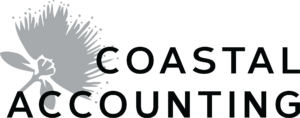It’s common to think of ourselves and our company as one entity. However, the company is a separate legal entity with its own limited liability. Shareholders often provide capital to the company for purchasing assets or funding working capital, and they may also withdraw cash, especially for personal use if there’s money in the company’s bank account.
The shareholder’s current account tracks these transactions between the company and its shareholders, which is crucial for tax compliance and record-keeping. This article delves deeper into this concept.
What is a Shareholder Current Account?
Imagine it as a ledger where a shareholder records the money they put into or take out of the company.
What Are Drawings?
When a shareholder withdraws money from the company without paying taxes, it’s termed “drawings.” It’s akin to taking money from the company’s piggy bank. Conversely, if you inject personal funds into the company, it’s referred to as “funds introduced.” The shareholder’s current account maintains a running total of these transactions to determine the balance owed either to you by the company or vice versa.
Paying Taxes on Drawings
Drawings are not tax-deductible expenses, meaning you can’t subtract them from your total income to reduce your tax liability. The company’s funds are distinct from the shareholder’s personal funds, even if the shareholder owns the company. If a shareholder withdraws more money than they have contributed, it can lead to complications. This situation is known as an overdrawn shareholder’s current account.
Overdrawn Shareholder Current Accounts
When you withdraw more money than you’ve put into the company, the account becomes overdrawn. In such cases, the company may need to pay Fringe Benefit Tax (FBT) to the Inland Revenue Department or you might be charged interest at a rate set by the IRD. The current interest rate is 8.41% per annum, which you can verify on the IRD website.
Managing an Overdrawn Shareholder’s Current Account
An overdrawn account without a repayment strategy can lead to compounded interest and is generally tax-inefficient. Here are some strategies to address this issue:
- Repay the money you’ve withdrawn.
- Declare a non-cash salary from the company if it is profitable.
- Receive a dividend from the company’s profits.
The rationale behind a non-cash shareholder salary is that the shareholder has already withdrawn the cash, which is why the account is overdrawn. A non-cash salary reimburses the loan for the cash drawings already taken.
Any of these options, or a combination, can be used to clear the overdrawn shareholder’s current account.
Points two and three imply that the company can only pay you a salary or dividend if it has retained earnings from past profits. Before making these payments, the company must ensure it remains financially stable. Typically, a profitable and tax-paying company will have retained earnings.
In summary, keep track of your withdrawals from the company to ensure everything is in order.

